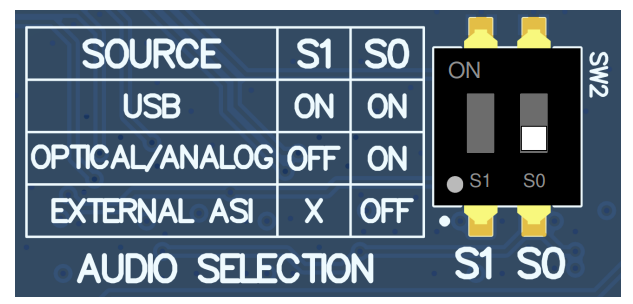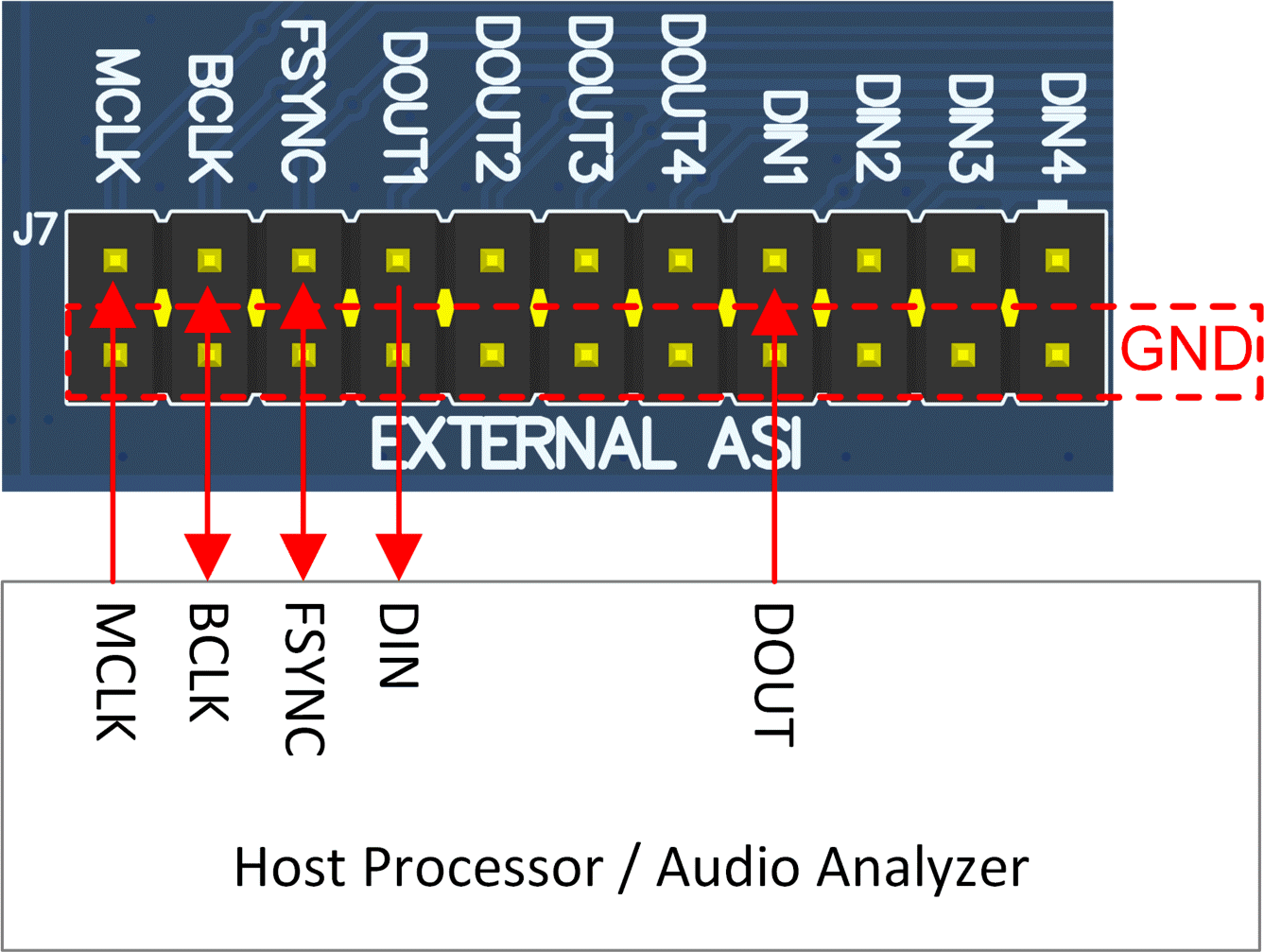SLAU903 October 2023
- 1
- Description
- Get Started
- Features
- Applications
- 6
- 1Evaluation Module Overview
- 2Hardware
-
3Software
- 3.1 Software Description
- 3.2 PurePath Console 3 Installation
- 3.3 TAx5x1x-Q1 EVM GUI
- 3.4 Configuration Examples
- 3.5 System Overview
- 4Hardware Design Files
- 5Additional Information
- 6References
2.2.1.3 External Audio Interface Mode
In this mode, the audio serial interface clocks for the evaluation board are provided through connector J7 from an external source. This architecture allows an external system to be used for communication with the evaluation board, such as a different host processor or test equipment (Audio Precision™). The clocks generated from the USB interface and PCM9211 are isolated with this setting. Figure 3-5 shows the AC-MB audio setting for the external mode of operation.
 Figure 2-5 AC-MB External Audio Interface Setting
Figure 2-5 AC-MB External Audio Interface SettingFigure 3-6 shows how to connect the external audio interface. Odd numbered pins are signal carrying, and even numbered pins are connected to ground.
 Figure 2-6 AC-MB Connection with External Audio Serial
Interface
Figure 2-6 AC-MB Connection with External Audio Serial
Interface